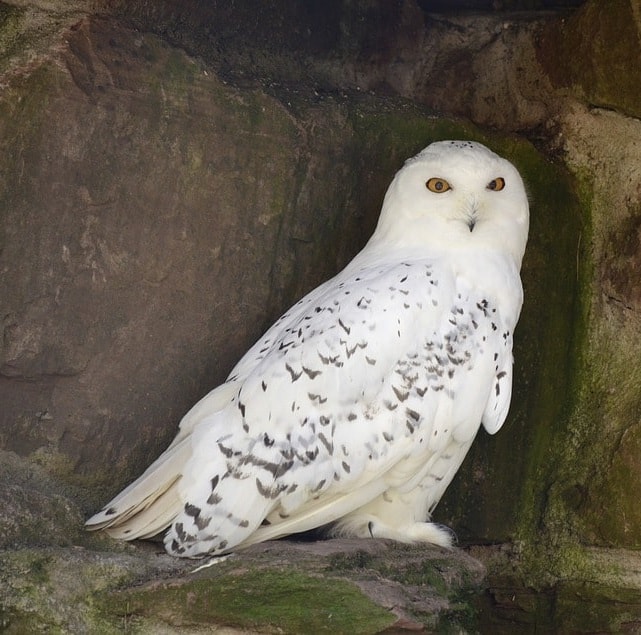
Snowy Owl
Pretty well adapted to the arctic environment they have excellent eyesight to locate their prays. Also high speed and strong claws to ensure their victim has no chance of escaping. Also they are caring parents and are intelligent.
Gender
It's easy to tell a it's gender. Grown males have a very few or none black marks. females have much more black sports.
Lifespan
About 8-9 years in the wild. in captivity - 20 years.
Weight
They are the heaviest owls found in North America. They weight between 700-2950 grams (3.5 to 6.5 lbs).
Activeness
They can hunt during both day and night.
Airports
They can often be found hanging out at airports. It's suggested that wide open spaces remind them of the tundra.
Range
Located in the northern parts of Alaska, Canada, Iceland, Scandinavia, Russia and Greenland. It's common to migrate southern during the winter.
Size
Up to 70 cm height and 150 cm wide. The wingspan makes them one of the largest owls species globally. Females are slightly larger than males.
Diet
Their favourite pray is lemming but they would eat other small mammals, birds and fish.
Breeding
in May. Egg's count (averagely 7) varies from 3 to 12 eggs. It depends on whether food is plentiful.
Enemies
Youngsters can be prayed by arctic foxes and wolves. Adult can be prayed only by human.
Population
It's estimated that the population is between 200 000 and 300 000.
Speed
Their speed can exceed 80 km per hour (50 miles hr) (50 miles per hour), but are knows for their slow and quiet flight.

